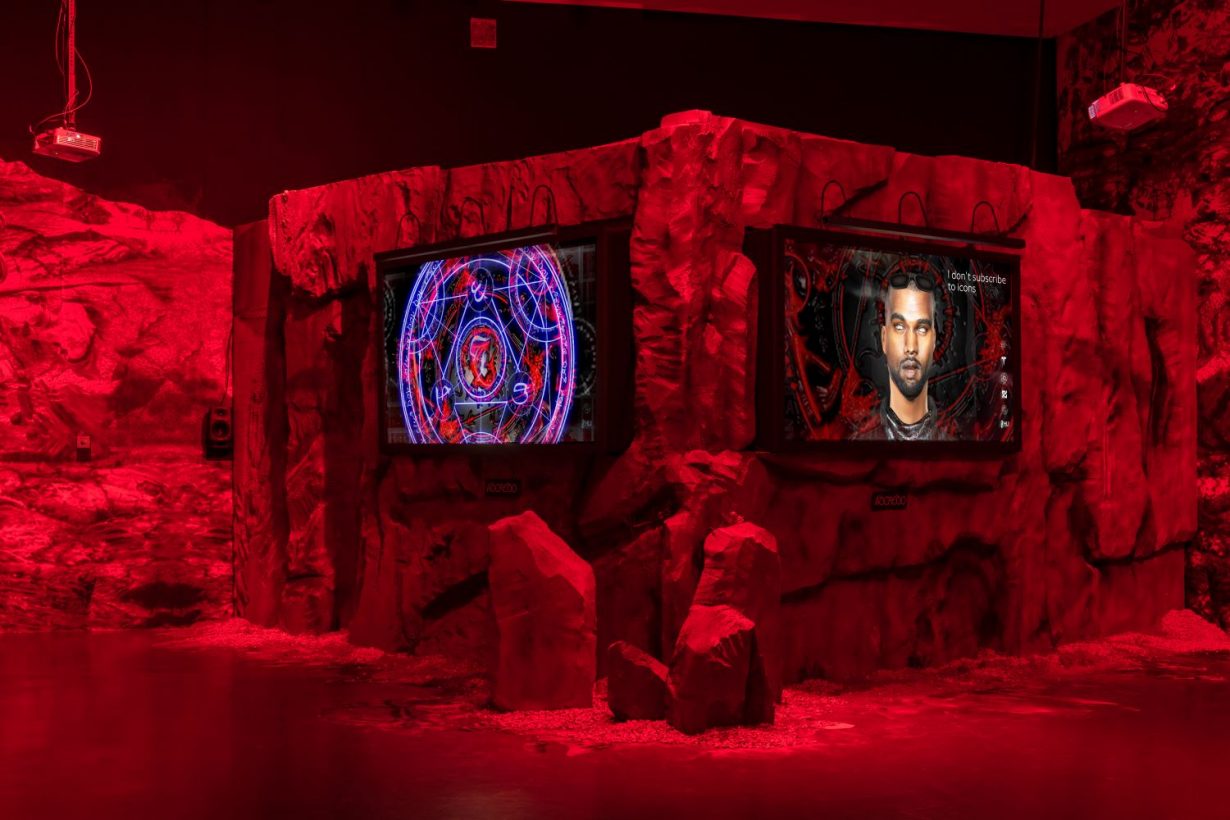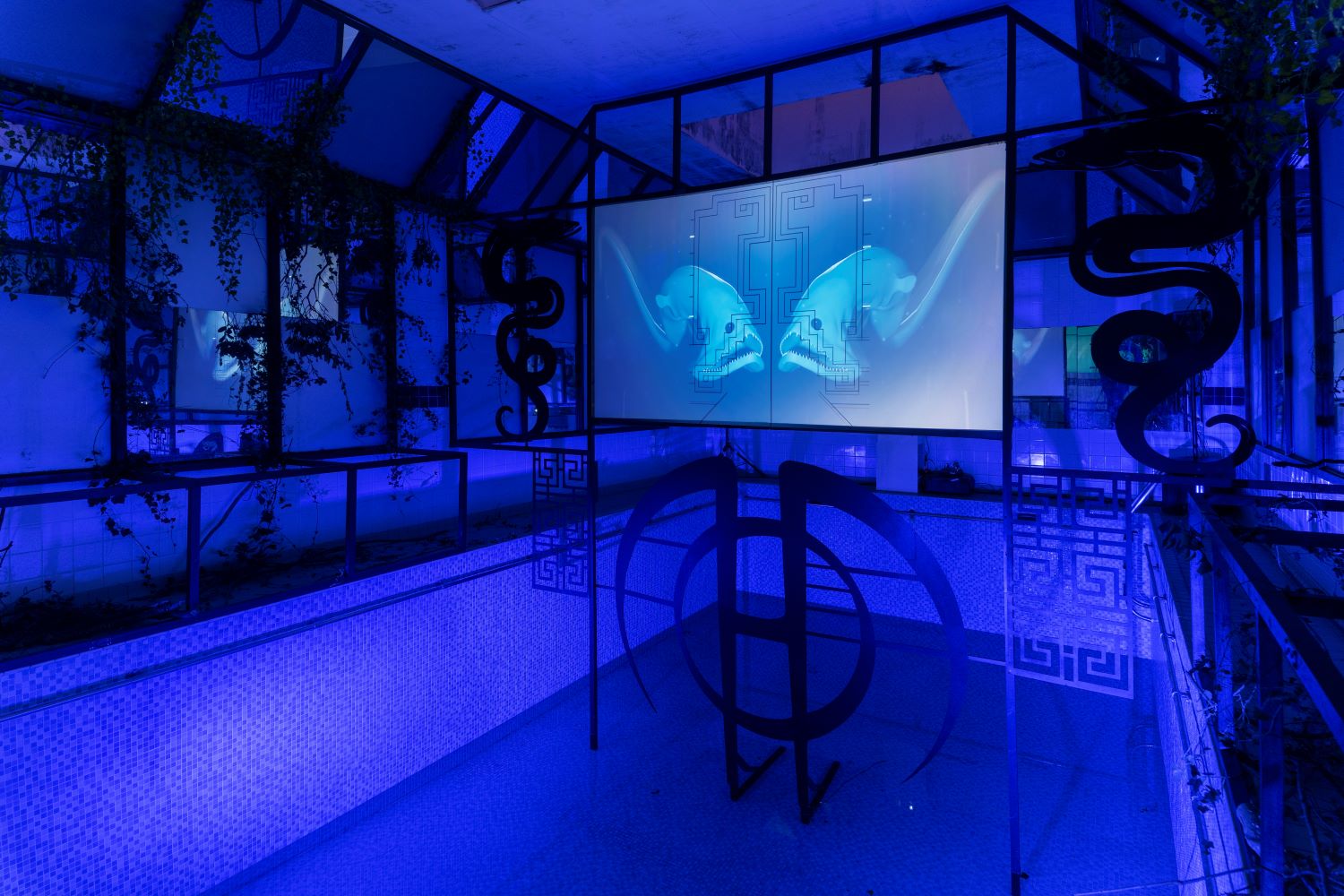In Remark’s series of interviews with artists based in the East Midlands, Joey Holder reflects about living in Nottingham and working internationally
Joey Holder studied fine art at Goldsmiths, University of London, graduating in 2010. Born in London, she found a home in Nottingham, where she has lived for the last seven years. Her collaborations with scientists cover such topics as marine biology, exploring the complex world of human interaction with science and natural history. Her online and offline installations reinterpret hybrid environment taking influence from their locations and from current affairs.
Holder has since exhibited widely in the UK and internationally. Meanwhile, she has worked to develop graduate initiatives outside of London to support early career artists. Holder has her studio at Nottingham’s BACKLIT Gallery; for Remark, BACKLIT’s Suzanne Golden asks Holder about the attraction of living in Nottingham, where her work draws the line between fact and fiction and what support art graduates need to survive the artworld…
Suzanne Golden Semelparous (2019) and Abyssal Seeker (2021), currently on show in the British Art Show 9 at Aberdeen Art Gallery, are site specific video and soundscape installations. They’re about eels. Tell us about that.
Joey Holder Semelparous (2019) is a work I made about the European Eel. I first found out about the species whilst on a research trip to South Korea, where I filmed an eel farm and began to learn about the species. I discovered that the European Eel swims 3,000 miles across the ocean once in its lifetime. It swims from Europe to the Sargasso Sea to breed and what’s fascinating is that scientists have never witnessed them breeding and they don’t know how they make the journey. I reference this in my work, to allude to the boundaries of human understanding, particularly of the natural world. In a Western framework, understanding is achieved through study, and we study things scientifically. I want to reveal the limits of that kind of knowledge, discover where it ends and where things become unknown. You know, nobody knows how these eels get there, nobody’s witnessed them breed, they go to this location, which they seem to know exists, as though it were in their genes. When something like this cannot be witnessed, and science fails us, reality becomes kind of speculative.

SG In your work there is a fine line between fact and fiction. One work in particular, Adcredo – The Deep Belief Network (2018), is suggestive of an underground tomb of unearthed truths, where do your ideas come from?
JH I don’t think the world is black and white, and I don’t believe in binary thinking. I’m not even sure whether I can distinguish between fact and fiction. I think it depends on the type of reality that you want to create and put out into the world. A lot of my work is based on these distortions of real-world events that take place, and my attempt to make sense of them. In 2015 when I started to research Adcredo – The Deep Belief Network, I became very scared about the situation unfolding at that time, particularly what I was observing on social media. There was a real divide developing, with people arguing over ideas that really shouldn’t be disputed. These platforms accelerate and enable negativity, it’s the way they’re set up, as if they were intended for that purpose. So I created a hellscape that reflected this. After investigating the political fallout of social media and online communications, I wanted to create a space that reflected the opposing voices, and all the personalities that inhabit these environments. So, I had Kanye West and Donald Trump, Putin and Pepe the Frog, and aliens, of course, and strange creatures that were all shouting together.

SG What are you currently working on now?
JH I’m working on adapting the Abyssal Seeker project for the Ljubljana Biennale of Graphic Arts. The work is split into different zones of the deep sea. I don’t like to take a piece of work that’s already made and then transport it somewhere else without considering the context, I like to respond to that place and that environment. It’s much better if I can establish a connection with the location and the people and create something site-specific, especially if I can incorporate the locality, the architecture for instance. The work will evolve again and go on to the Biennale of Sydney early next year.
SG Why have you chosen to live in Nottingham?
JH I was in London before, and I think I would’ve had a breakdown if I’d stayed any longer. I was quite confused as to where to go. I mean, I knew that I had to leave. In 2014 I had the opportunity to do a six-month residency at Near Now, a programme based at Nottingham’s Broadway Cinema, supporting digital art and innovation. I kind of fell in love with the place. It has great access to the Peak District, it’s great to be able to get to green spaces quickly. It’s a very different scene to London. I felt in London everything centred on having an art career. I really feel in like Nottingham I have a lot more head space, and time for people and friendships.

SG You started Chaos Magic in Nottingham in 2017, an artist-run space offering a research and learning programme for recent graduates, peer-to-peer support and mentorships. Why did you set this up and what was the most significant event that took place?
JH Running an artist space came out of a desire to do more than just produce exhibitions. I wanted to support artists and focus on them, but I didn’t want to make a platform just for their CV. I wanted to create an environment where they felt enabled to continue making work; a supportive space that focused on skill-sharing and community, and somewhere they felt safe and encouraged to chat about their practice and ideas. I think this desire came from my own experience of feeling very lost after I graduated and not having that opportunity and support. On a degree course you have all this time, and education and structure, and then suddenly it’s cut off.
Some memorable events have been Ghost Camp in 2019 organised by The Mycological Twist (a project investigatingpermaculture extensions to an exhibition space), where the Chaos Magic group went to Sherwood Forest to camp and reimagine traditional mythology through workshops. Contributors, artists and researchers joined the camp with readings, cooking sessions, troll stories, mushroom paper-making and foraging. It’s about spending time together and really making those connections, to feel comfortable and learn together. We were in conversation with someone delivering permaculture workshops. We were offered a public green space in Nottingham, an old Victorian entrance to a sewage works that’s always been known as ‘the Curious Tower’.We’ve been using the space to grow veg and herbs, with public walks and workshops for local people. Just going somewhere, to look after something, having that connection with nature is really important.
SG Tell us a little bit about SPUR, a virtual online residency platform that you started in 2020 to bring together international graduates; how did this come about?
JH I worked with Omsk Social Club in Berlin to develop SPUR. Omsk Social Club use Live Action Role Play (Larp) and Real Game Play (RGP) to create states that could potentially be fiction, or a yet unlived reality for the players. The virtual digital platform is intended as a revolt against the art world and this culture of competition that exists where everyone is out for themselves. We wanted to destroy the artist-ego. SPUR is entirely focused on people working together and building connections. To begin with, Omsk Social Club placed the participants in a roleplay exercise: they couldn’t enter as themselves, they had to create a pseudo identity, a new character for them to inhabit. The interactions were all through an online platform that we set up, and they couldn’t reveal their real identity while on this platform. It was really interesting as it allowed us all to let go of any baggage that we carried with us. Everyone became much more of a collective body. In total there were 14 different virtual worlds created that could be accessed through the SPUR world website. We’re now working on SPUR 2.0 with FACT in Liverpool and Arebyte in London, I’m really excited about the possibilities of SPUR and how it continues to evolve and develop.
Joey Holder is currently participating in British Art Show 9, currently at Aberdeen Art Gallery until 10 October. The 34th Ljubljana Biennale of Graphic Arts runs 10 September – 21 November.
This article is part of Remark, a new platform for art writing in the East Midlands by ArtReview in collaboration with BACKLIT. Read more here and sign up for the Remark newsletter here
